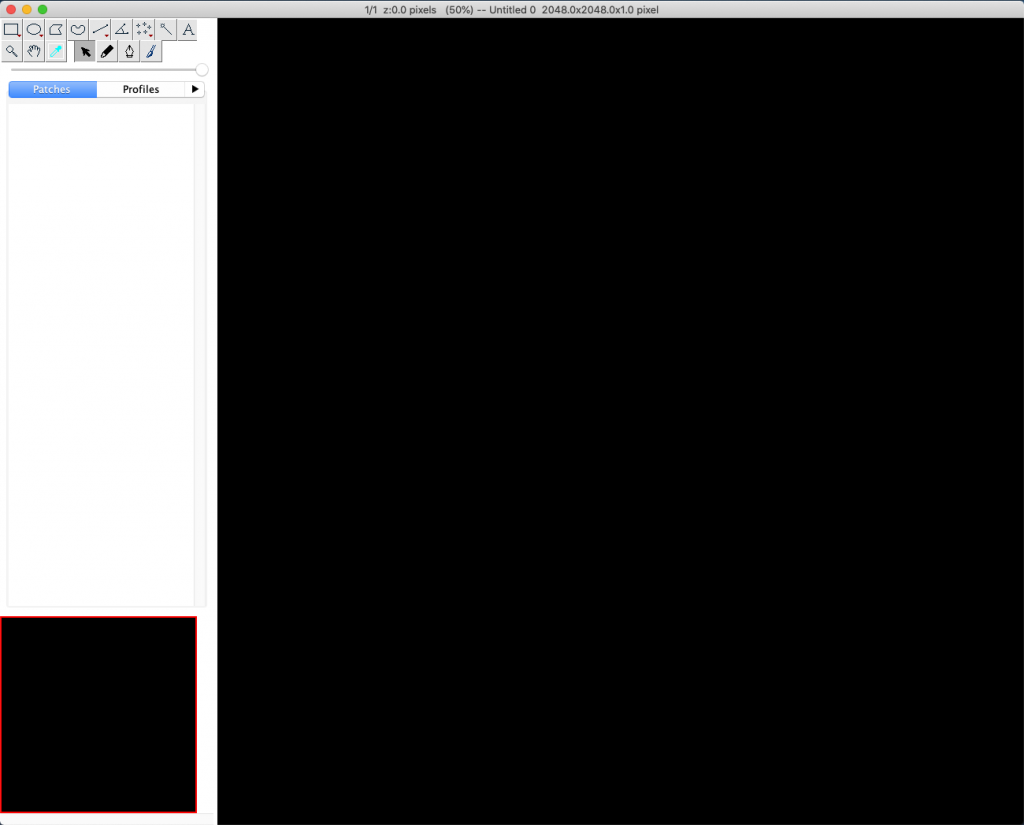From TrakEM2 to Blender
This user guide provides step by step instructions to load your image stack into Fiji and TrakEM2, align and trace your samples, export the 2D traced objects as 3D models, and load these 3D models in Blender
Import image stack into TrackEM2
- Open the software Fiji (can be downloaded here).
- Import an image sequence (File>Import>Image sequence…)
- Select the folder where the images are situated and click on import.
- Tick the box ‘Convert to 8 bit Grayscale’ and “Use virtual stack” (to save memory).
- Open a new TrakEM2 canvas (File>New>TrakEM2 (blank).
- Choose a folder where the TrakEM2 project will be saved.
- Once the destination has been chosen, two windows will open, a project window showing the node structure of your reconstruction project, and a display window in which the serial images with appear, with a tool box and list on the left hand side (see image below).


- Right-click in the black canvas and select Import>Stack and pick the opened stack.
- Set the slice thickness in pixels. This is calculated by dividing the slice thickness (in nm) by the pixel size (resolution) – set the slice thickness to this value.
- Example: 10nm slice thickness / 5 nm per pixel = 2 (that means TrakEM2 has to put 2 pixels between each slice to reach the 10nm).
- To set the slice thickness later, select all the images of the stack in the TrakEM2 window under “Layers” column, right click and select “Scale Z and thickness”.
- To reset the slice thickness, right-click on the image folder and select “Reset layer Z and thickness”.
- Set the pixel size to have a correct slice thickness (Image>Properties…)
-
- Set the pixel size in microns! Blender will only take the value and not the unit.
-
Align the stack and trace your samples
- Align a stack (right-click in the canvas>align).
- Select the type of alignment – see the TrakEM2 user manual to know which type of alignment is appropriate.
- Create an area_list to trace your object.
- In the node window, add a new “area_list” to “anything” under “Template” column. Drag “anything” and “area_list” into the project folder under Project Objects column. To create a second object, simply drag the “area_list” from “Template” column to the folder suited under “Project Objects”.

- Trace a structure.
- Select “Z space” in the TrakEM2 canvas and use the brush to draw on the images.
Export the 3D models
The process of exporting the 3D models depends on your version of Fiji.
- If you have an old version of Fiji with Java 6 (note: a version of Fiji coupled with Java 6 is available on Fiji website for Windows and Linux users):
- Create a 3D model of a structure: Select an area_list>right click>Show in 3D>Choose a value between 1 and 100.
- Save the 3D model generated: File>Export surfaces>WaveFront.
- If you have a newer version of Fiji on Macintosh or Windows that uses Java 8:
- Select an area_list, then click File>New>Script.
- Copy the text of this script and paste it into script box from the above step. Select “Python” as language.
- Adjust the parameters at the top of the script if desired, then click run.
- (This script is a modified version of the original “Export multiple area lists” script found here.)
Open the models in Blender
- Open Blender and import the .obj file using the Wavefront option (File>Import>Wavefront). We recommend using the 2.83 LTS version of Blender.
- To install NeuroMorph or other Blender add-ons to analyse your models, follow the installation instructions here.